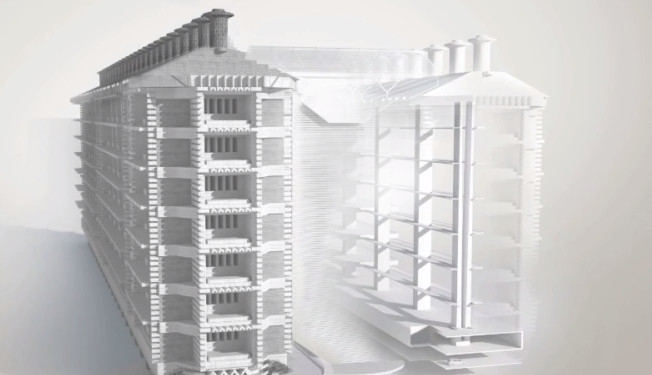The world's first self-cooling building
The Eastgate Center in Harare, Zimbabwe is always kept at 27 degrees thanks to a completely natural ventilation and cooling system based on termites.
In 1991, architect Mick Pearce encountered a difficult problem. An investment group in Harare, Zimbabwe hired him to design the largest office in the retail building. But they do not want to spend money on air conditioning systems to cool such a large building. It seems that this request brings Pearce an impossible problem.
How to design buildings that can cool themselves?

Works are made from concrete slabs and bricks, like soil inside a termite mound.
In the video below, you will see a termite mound, millions of termites living in this structure. Some termites can be amazingly taller than 4.5m. Although the termite buildings of the termites look superficially, they are actually flooded with small holes that allow the air to move through the nest easily like a giant lung.
This structure 'breathes in and out' when the temperature rises or falls during the day. The ventilation system of the inspiration for Pearce uses the 'biomimicry' method , mimicking the intelligent structure in nature to solve human problems.
Let's look at the Eastgate center .
Works are made from concrete slabs and bricks, like soil inside a termite mound. These materials have a high heat effect, which means they can absorb a lot of heat without changing the temperature too much.
The exterior of the building is designed like a cactus prickly. By increasing the surface area, heat loss will increase at night, while the increase in heat will be minimized during the day.
In the building, low-consumption electric fans blow cool night breeze from outside and distribute to all 7 floors. Concrete blocks draw cool air, insulate the building and cool the circulating air.
When morning comes and temperature rises, hot air is directed to the ceiling and freed through a chimney. Thanks to this innovative design, the internal temperature always stays at a comfortable level of 27 degrees Celsius during the day, 14 degrees Celsius at night.
That's not to mention that the building uses 35% less energy than similar buildings in Zimbabwe.
Since opening in 1996, Mick Pearce's 95% natural climate control system has turned Eastgate Center into a global symbol of sustainability.
So we need to ask ourselves, if an architect can design a self-cooling building inspired by the termite's climate control system, can Mother Nature bring any other innovations if Do we know more carefully?
- Principle of operation of air coolers
- Good cooling water for children in the hot season
- Cooling Laos wind
- Hot day cooling drinks are good for your health
- Basic cooling for hot days
- Cooling cabinets do not need electricity, do not need ice, can be folded neatly and still keep cold effectively
- Construction materials regulate heat
- Simple ways to cool your body in hot days
- The cooling system on ISS is broken
- The mysterious crater in Siberia houses a 25-storey building
- Great way to cool cars 60 degrees after only 30 seconds
- Successfully developed cooling methods for magnetic refrigerators
 Norway built the world's tallest wooden tower
Norway built the world's tallest wooden tower Kremlin
Kremlin Ashurbanipal: The oldest royal library in the world
Ashurbanipal: The oldest royal library in the world Decoding the thousand-year construction of Qin Shihuang shocked the world
Decoding the thousand-year construction of Qin Shihuang shocked the world